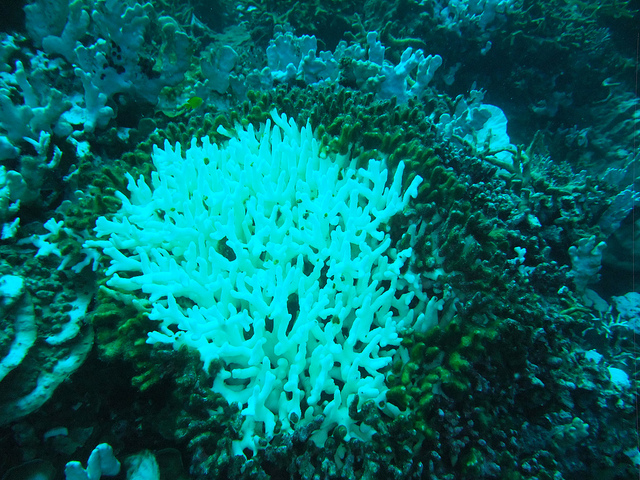Report on the Environmental Implications of Direct Ocean Carbon Capture and Storage (DOCCS) Technologies
Advancing Climate Action (SDG 13) Through Marine Innovation
In the global effort to meet the objectives of Sustainable Development Goal 13 (Climate Action), marine carbon dioxide removal technologies are emerging as a significant component in mitigating global warming. A recent review by scientists from Plymouth Marine Laboratory (PML) and the University of Exeter examines one such technology, Direct Ocean Carbon Capture and Storage (DOCCS). This technology functions by electrochemically extracting dissolved inorganic carbon from seawater. The resulting low-carbon, high-pH water is returned to the ocean, where it naturally absorbs more atmospheric CO₂, thereby contributing to climate mitigation efforts. However, the research underscores the critical need for caution before these technologies are deployed at a commercial scale, ensuring that climate solutions do not inadvertently compromise other sustainability goals.
Assessing Potential Impacts on Life Below Water (SDG 14)
The primary concern highlighted in the report relates to Sustainable Development Goal 14 (Life Below Water). The discharge of DOCCS-treated seawater into the marine environment presents several potential risks to marine organisms and ecosystems. The SeaCURE project’s initial assessments and a comprehensive literature review have identified key areas of concern that must be addressed to protect marine biodiversity.
- Reduced Carbon Availability: The process significantly lowers the concentration of dissolved inorganic carbon, a substance vital for fundamental biological processes. This could negatively affect marine organisms that rely on it for photosynthesis (e.g., plankton, seaweeds) and for building shells and skeletons (e.g., crabs, shellfish).
- High pH Stress: The treated seawater possesses a high pH, which can create stressful physiological conditions for various marine species, potentially impacting their health, growth, and reproduction.
- Unknown Ecosystem-Level Effects: There is a significant knowledge gap, with no published studies directly investigating the cumulative and long-term responses of entire marine ecosystems to the unique combination of low carbon and high pH conditions created by DOCCS.
A Framework for Responsible Innovation and Sustainable Partnerships (SDG 9 & SDG 17)
To ensure the development of DOCCS aligns with Sustainable Development Goal 9 (Industry, Innovation, and Infrastructure), which calls for sustainable and resilient infrastructure, the report proposes a structured research framework. This framework is essential before any large-scale deployment is considered. The collaborative nature of this research, supported by the UK Department for Energy Security and Net Zero and the UKRI NERC CO₂ Removal Hub, exemplifies the importance of Sustainable Development Goal 17 (Partnerships for the Goals) in tackling complex environmental challenges.
Priority areas for urgent investigation include:
- Laboratory-based studies to determine how key marine organisms and species respond to the specific conditions of DOCCS discharge.
- Long-term ecosystem-level studies to understand the chronic impacts and potential cascading effects on marine food webs.
- Controlled field experiments, such as mesocosm studies, to be conducted before any large-scale ocean deployments are authorized.
- Detailed chemical characterisation to model how DOCCS discharge behaves and dilutes under various real-world oceanographic conditions.
The findings stress that while the ocean’s capacity for carbon storage makes DOCCS a promising tool, the pace of environmental impact research must match the pace of technological development. This ensures that innovative climate solutions do not cause unintended harm to the marine environment, thereby upholding the principles of sustainable development.
Analysis of Sustainable Development Goals in the Article
1. Which SDGs are addressed or connected to the issues highlighted in the article?
-
SDG 13: Climate Action
- The article directly addresses climate change mitigation by discussing “ocean or marine carbon dioxide removal” as a key component in “efforts to mitigate global warming.” The entire premise of the Direct Ocean Carbon Capture and Storage (DOCCS) technology is to combat climate change by removing atmospheric CO₂.
-
SDG 14: Life Below Water
- The primary focus of the article is the potential environmental impact of DOCCS technology on marine life. It expresses concern about how changes in seawater chemistry (low carbon, high pH) could affect “marine organisms,” “species and ecosystems,” “plankton, seaweeds,” and “crabs, shellfish.” This directly relates to the goal of conserving and sustainably using the oceans and marine resources.
-
SDG 9: Industry, Innovation, and Infrastructure
- The article discusses the development of new “ocean carbon removal technologies” and the establishment of “pilot projects.” It highlights the need for responsible innovation, where “environmental research must keep pace with technological development” to ensure new solutions are sustainable and do not cause unintended harm.
-
SDG 17: Partnerships for the Goals
- The research and projects mentioned are collaborative efforts. The article names several partners, including Plymouth Marine Laboratory (PML), the University of Exeter, the UK Department for Energy Security and Net Zero, and the UKRI NERC CO₂ Removal Hub, demonstrating a multi-stakeholder partnership to address a complex global issue.
2. What specific targets under those SDGs can be identified based on the article’s content?
-
Under SDG 13 (Climate Action):
- Target 13.3: “Improve education, awareness-raising and human and institutional capacity on climate change mitigation…” The article, the published study, and the public engagement efforts by the research team are direct actions to raise awareness and build institutional capacity regarding the complexities and potential impacts of a new climate mitigation technology.
-
Under SDG 14 (Life Below Water):
- Target 14.2: “By 2020, sustainably manage and protect marine and coastal ecosystems to avoid significant adverse impacts…” The article’s central warning is to avoid deploying DOCCS at scale until the impacts on “species and ecosystems” are understood, which is a direct call to protect marine ecosystems from potential harm.
- Target 14.3: “Minimize and address the impacts of ocean acidification, including through enhanced scientific cooperation at all levels.” While the technology creates high pH (alkaline) conditions, not acidification, this target is relevant as it deals with managing ocean chemistry (pH and carbon levels) and its biological impacts. The article is a prime example of the “enhanced scientific cooperation” needed to understand these effects.
- Target 14.a: “Increase scientific knowledge, develop research capacity and transfer marine technology…” The article is entirely focused on the need for more scientific knowledge and research. It explicitly calls for “more detailed research,” “laboratory studies,” “long-term ecosystem studies,” and “field experiments” to build the necessary research capacity before deploying a new marine technology.
-
Under SDG 9 (Industry, Innovation, and Infrastructure):
- Target 9.5: “Enhance scientific research, upgrade the technological capabilities of industrial sectors… and encourage innovation.” The article discusses the development of “DOCCS technologies” and “pilot projects,” which represents technological advancement. The call for caution and further research ensures that this innovation is pursued responsibly and sustainably.
-
Under SDG 17 (Partnerships for the Goals):
- Target 17.17: “Encourage and promote effective public, public-private and civil society partnerships…” The collaboration mentioned between universities (PML, University of Exeter) and government/research bodies (UK Department for Energy Security and Net Zero, UKRI NERC CO₂ Removal Hub) is a clear example of such a partnership working towards a sustainable development goal.
3. Are there any indicators mentioned or implied in the article that can be used to measure progress towards the identified targets?
-
For SDG 14 (Life Below Water):
- pH and Dissolved Inorganic Carbon Levels: The article explicitly mentions that the technology creates “low-carbon, high pH seawater.” Measuring these chemical properties in the discharge area is a direct indicator for monitoring environmental changes, relevant to Target 14.3.
- Impacts on Marine Organisms: The article implies the need for indicators related to marine biodiversity and health. This includes monitoring the effects on photosynthesis in “plankton, seaweeds” and shell-building processes in “crabs, shellfish.” These serve as biological indicators for Target 14.2.
- Number of Research Studies and Projects: The article itself is a “new study,” and it mentions the “SeaCURE project” and ongoing “environmental impact experiments.” The quantity and findings of such research are direct indicators of progress towards increasing scientific knowledge, as per Target 14.a.
-
For SDG 9 (Industry, Innovation, and Infrastructure):
- Number of Pilot Plants and Technological Developments: The existence of the “SeaCURE pilot plant” and the development of “DOCCS technologies” by several companies are indicators of progress in innovation, relevant to Target 9.5. The research into their environmental impact is an indicator of the sustainability of this innovation.
-
For SDG 17 (Partnerships for the Goals):
- Existence of Multi-Stakeholder Collaborations: The named partnership between the universities and government/research bodies is a qualitative indicator of progress towards Target 17.17. The number of institutions involved and the scope of their collaboration can be measured.
4. Table of SDGs, Targets, and Indicators
| SDGs | Targets | Indicators Identified in the Article |
|---|---|---|
| SDG 13: Climate Action | 13.3: Improve education and awareness-raising on climate change mitigation. | Publication of scientific reviews and studies; public engagement activities on marine carbon dioxide removal. |
| SDG 14: Life Below Water | 14.2: Sustainably manage and protect marine and coastal ecosystems to avoid adverse impacts. | Studies on the response of marine ecosystems and food webs to DOCCS discharge; monitoring impacts on photosynthesis and shell-building organisms. |
| 14.3: Minimize and address the impacts of ocean acidification. | Measurement of seawater pH and dissolved inorganic carbon concentrations in areas affected by DOCCS discharge. | |
| 14.a: Increase scientific knowledge and develop research capacity. | Number of research projects (e.g., SeaCURE), laboratory studies, and published papers on the effects of marine technologies. | |
| SDG 9: Industry, Innovation, and Infrastructure | 9.5: Enhance scientific research and encourage innovation. | Development of DOCCS technologies; establishment of pilot plants (e.g., SeaCURE pilot plant) for testing and evaluation. |
| SDG 17: Partnerships for the Goals | 17.17: Encourage and promote effective public, public-private and civil society partnerships. | Existence of collaborative research projects between academic institutions (PML, Exeter) and government/public bodies (UK Dept. for Energy, UKRI NERC Hub). |
Source: thefishsite.com







